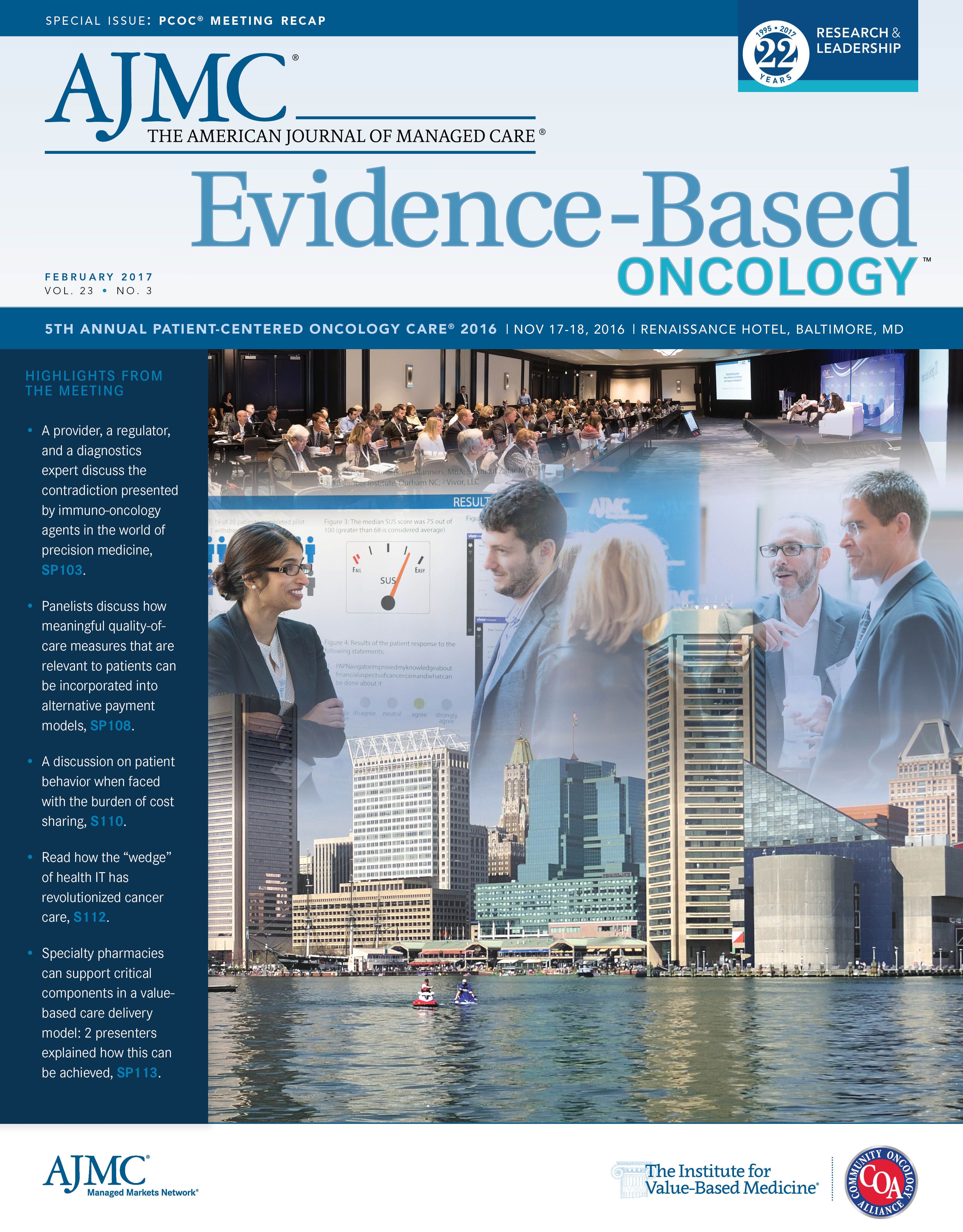Publication
Article
Evidence-Based Oncology
Making Sense of Value for the Payer in Oncology Care
Author(s):
Roy Beveridge, MD, senior vice president and chief medical officer at Humana, provided an overview of the transition to value-based care at the 5th annual Patient-Centered Oncology Care® meeting.
AS THE HEALTHCARE WORLD TRANSITIONS TO
value-based care and providers and health plans face major challenges, payers have faith in the move, said Roy Beveridge, MD, senior vice president and chief medical officer at Humana.
Beveridge was the keynote speaker at the 5th annual Patient-Centered Oncology Care® (PCOC®) meeting, hosted by The American Journal of Managed Care®, November 17-18, 2016, in Baltimore, and walked the audience through the transition toward value-based care.
Beveridge provided context to the move toward value-based care: 5 to 10 years ago, the insurance industry underwrote its plans, which gave actuaries the power to decide which populations would receive insurance.
“Underwriting has now disappeared, which means any person who comes to an insurance plan, they can be underwritten,” which is definitely a patient-centered move. This means, however, that the responsibility to ensure that the enrolled population is healthy rests on the health plan’s shoulders, along with the providers.
Thus, health plans have a tremendous challenge on their hands, Beveridge said, with burgeoning obesity rates and an increasing percentage of Americans living with unmanaged chronic conditions, including:
- 50% with hypertension
- More than 80% with hyperlipidemia
- 43% who are hyperglycemic
With healthcare costs rising steeply over the years, and currently tallying at 18.3% of the nation’s GDP, chronic conditions account for 80% of healthcare spending, Beveridge said. These statistics are staggering and need to be reduced. Therefore, the top priority for health plans is to change the health of the population. To add to this, changes within the reimbursement system—which eliminated the Sustainable Growth Rate “patch” and replaced it with the Medicare Access and CHIP Reauthorization Act—are steadily moving toward value-based payments. CMS has set its goals to tie nearly 50% of Medicare payments to quality, through alternate payment models, by 2018.
“Whether we call it value or risk-based care, it is coming,” said Beveridge. He then provided a perspective of what this transition means for the payers in terms of benchmarking the costs. “In the old world of fee-for-service (FFS), the payer was only managing the ceiling, or the upper limit of the costs.” So, the payers developed systems to deal with this ceiling and to identify the cause of variations in resource use. However, the current transition toward risk-based payment models, Beveridge said, is forcing payers— CMS as well as private health plans—to think about the floor of the variance, to ensure that providers are paying attention to the quality of care that they render.
Beveridge explained that bundled payments can bridge the transition of provider groups from no-risk FFS to full-risk payment models. And value-based care has achieved its objectives for Humana. Beveridge showed that Humana’s Medicare Advantage members had much better outcomes in a value-based healthcare setting compared with an FFS setting. This paralleled a 20% reduction in overall medical costs, “Which is why CMS is trying to move enrollees from FFS to risk-based models,” he said.
Beveridge then went on to explain the distinct role of the various providers in a value-based healthcare world. In primary care, unlike in oncology, moving from FFS to value-based care results in a 20% reduction in global costs. This, Beveridge said, will force primary care physicians (PCPs) to take on an increasing amount of responsibility for their patient’s health, since a PCP’s payments will be based on the patient’s health. “So, a lot of decisions in the FFS world that are being made by the payer will now be made by clinicians who are looking at the quality and structure. The patient—PCP relationship will be much stronger, because they will be the focal point for which people now obtain specialist care.”
Care will be more integrated and team-based, and there will be greater communication between the PCP and specialists, which will also involve a tremendous amount of data exchange. The emphasis, when choosing the specialist, Beveridge believes, will be their track record of quality care and outcomes, which will indirectly impact the PCP’s share of risk.
“Diagnostics will help guide choice of value treatments,” said Beveridge, adding that the pharmaceutical industry, overall, will undergo greater scrutiny with a push for innovative products. He also believes that in-home care will be increasingly popular, as it has been proven to be significantly less expensive than hospital-based care, but hospitals will simultaneously have to evolve and address high costs. “Palliative care will continue to expand significantly,” Beveridge added, stating that the existing lack of communication between the patient and the provider is what is responsible for the patient being administered chemotherapy 3 to 4 weeks before death.


